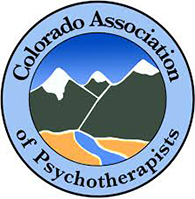I like bumper stickers and vanity plates. They make stopping at red lights more interesting.
Last week I saw a sedan with two bumper stickers, side by side. One said, “I’m Proud My Son is a Soldier”, and “Practice Random Acts of Kindness”. The contrast was intriguing.
Several days later, as I was driving to my office, I read yet another message on the back window of an SUV. It is a message seared into my mind, that I will never forget . . .
. . .“365 days of chemo completed on September 12, 2014 Chase: age 9” I blinked and read it again. OMG – age 9. I felt a mix of emotions – admiration of this child and his family for fighting forward; pain for what they have suffered; gratitude for healing resources; and fear for his future vulnerability and uncertainty.
My intention every week is to inspire, encourage and inform.
All of us who have felt the impact and the trauma of cancer are inspired by the courage and resilience of these children and their families. We are inspired by the progress being made in cancer treatment in both traditional and alternative approaches, particularly when used integratively. We are inspired to appreciate the gift of every child that graces our lives.
I want to share with you some statistics about treatment of cancer in children.
Facts About Childhood Cancer:
- Childhood cancers make up less than 1% of all cancers diagnosed each year.
- Cancer is the second leading cause of death in children (after accidents).
- Childhood cancer is the leading cause of disease-related death among children and adolescents (ages 1 to 19 years) in the United States, although cancer among children is rare.
- Childhood cancer rates have been rising slightly for the past few decades.
- The causes of childhood cancer are not well understood.
- Because of major treatment advances in recent decades, more than 80% of children with cancer now survive 5 years or more. Overall, this is a huge increase since the mid-1970s, when the 5-year survival rate was about 60%.
- The most common types of cancer diagnosed in children and adolescents are leukemia, brain and central nervous system tumors, lymphoma, rhabdomysarcoma, neuroblastoma, Wilms tumor, bone cancer, and gonadal germ cell tumors.
- Nearly 2,000 children die of cancer each year in the United States, indicating that new advances and continued research to identify effective treatments are required to further reduce childhood cancer mortality.
- About 70,000 adolescents and young adults ages 15 to 39 years are diagnosed with cancer in the United States each year.
- Adolescents and young adults are often diagnosed with different types of cancer than either younger children or older adults. For example, adolescents and young adults are more likely than either younger children or older adults to be diagnosed with Hodgkin lymphoma, melanoma, testicular cancer, thyroid cancer, and sarcoma. However, the incidence of specific cancer types varies widely across the adolescent and young adult age continuum.
- Childhood cancer survivors are at risk, to some degree, for several possible late effects of their cancer treatment. Late effects can be:
Lung problems
Congestive heart failure
Slowed or delayed growth and development (in bones and overall)
Learning problems
Joint replacement
Hearing loss
Increased risk of other cancers later in life
I close with the lyrics to the song recorded by The Carpenters in 1971 – “Bless the Beasts and the Children”.
Bless the beasts and the children
For in this world they have no voice
They have no choice
Bless the beasts and the children
For the world can never be the world they see
Light their way
When the darkness surrounds them
Give them love
Let it shine all around them
Bless the beasts and the children
Give them shelter from the storm
Keep them safe
Keep them warm.
References:
http://www.cancer.org/cancer/cancerinchildren/detailedguide/cancer-in-children-key-statistics
http://www.cancer.gov/cancertopics/factsheet/Sites-Types/childhood



I found it interesting that you would find imbalance in a parent sharing space on their license plate for bumper stickers with: “I am proud of my son serving in the military” and “Practice Random Acts of Kindness”. Hopefully we are all proud of our children regardless of the careers they may choose. Anytime a child is taking responsibility for their own lives and paying their own way…we have succeeded. Acknowledgement of all people making their own way especially during times of strife is always an act of kindness. This parent is full of love…that’s a good thing:) Alice
I’m delighted my observation of the co-existing bumper stickers got you thinking. I didn’t say they were imbalanced. I said that I saw them as contrasting and intriguing, meaning different and interesting. And that is how we grow and learn; through comparison and contrast. These bumper stickers could generate a variety of discussions around war, politics, courage, sociology, spirituality, change processes, etc. – the possibilities are endless.